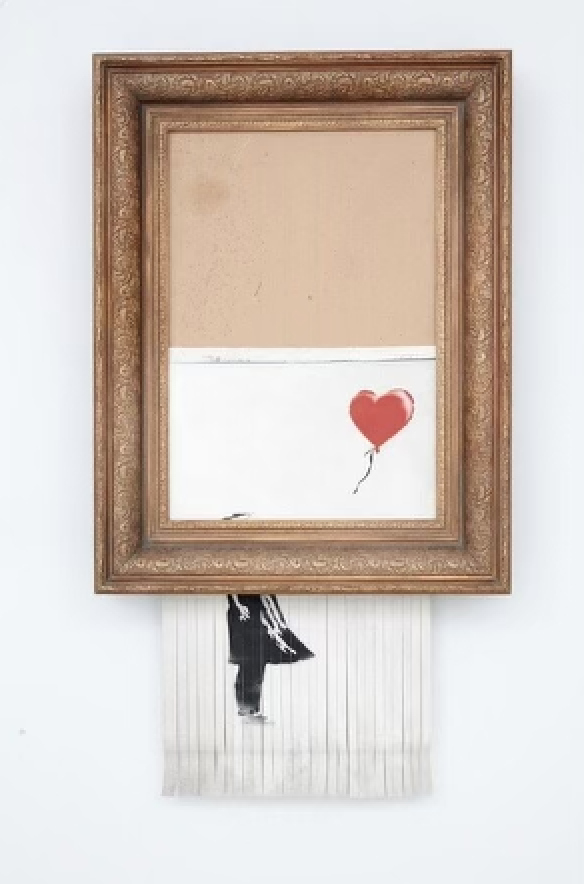Banksy and his ironic relationship with the art market
Photo By: Banksy
On Oct. 14, one of Banksy’s famous artworks, Love is in the Bin (2018) was sold at an auction held at Sotheby’s – a fine arts company – for $25.4 million, setting the record for his highest bidding piece.
Love is in the Bin has quite a rich history. Back in 2018, one of Banksy’s most recognizable pieces, Girl with Balloon (2002), was sold at an auction for $1.4 million; but to everyone’s surprise, Banksy had apparently installed a shredder in the artwork’s heavy gilded frame, self-destructing half of the famous painting. This was a stunt planned by Banksy himself in an effort to prank and confuse the art market.
“A few years ago, I secretly built a shredder into [the] painting in case it was ever put up for auction,” Banksy said in a public Instagram post.
Ironically enough, Banksy additionally claims he planned for the entirety of the artwork to be shredded completely but was faced with a malfunction. The question of whether or not this apparent flaw in Banksy’s scheme was genuine is very much irrelevant. With the bottom half of the painting shredded, many viewed the piece as a brand-new work of art with Banksy christening the name: Love is in the Bin, nearly doubling the artwork’s value since the infamous stunt.
While many critics and collectors view Love is in the Bin to be a direct work of genius meticulously constructed by Banksy, there’s an entirely different theory regarding the stunt’s initiation. Art critics and fans of Banksy’s work – myself included – tend to believe that Banksy’s objective was to directly criticize and make fun of the collectors obsessed with his work. The great majority of collectors and bidders at auctions aren’t cultured and don’t care for the appreciation of art or its meaning – they are simply investing in trends. Many believe that Banksy, as a powerful and passionate artist, was hoping to demonstrate how moronic the auction world really was and how investors are willing to buy anything as long as they have the financial capabilities; and in many ways, he was right. Three years later, Love is in the Bin was finally sold to an anonymous bidder for $25.4 million – the highest bidding ever for a Banksy piece.
With Love is in the Bin, Banksy has properly illustrated the absurdity and nonsensical nature of the average collector. A plan to destroy an original painting to spite collectors birthed an entirely new work of art of even greater value, which is genuinely baffling. The creativity and aesthetic value of art have become nullified; money defines worth rather than the original ideas bestowed upon by the artists themselves. We have gotten to the point where investors are willing to pay tens of millions of dollars for a half shredded canvas, but perhaps this is all a part of Banksy’s plan. Perhaps this is a part of a greater scheme of irony to expose collectors for their foolishness and utter stupidity.



